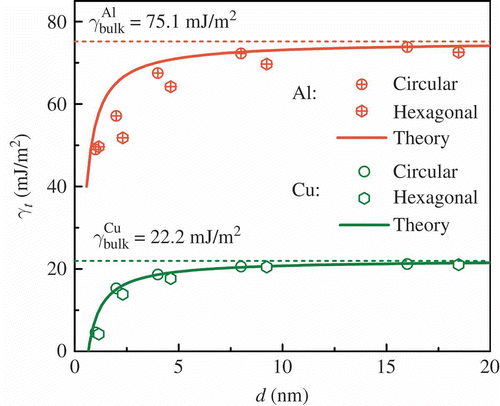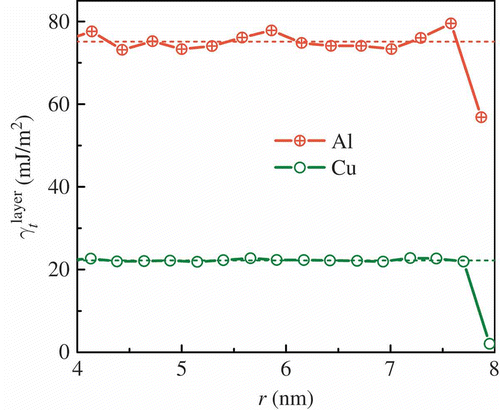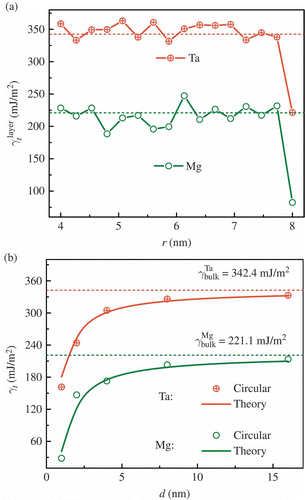Figures & data
Figure 1. Schematic of the simulation cell of a <111> nanowire with a circular cross section (a) and a hexagonal cross section (b). Blue (dark) spheres represent atoms at twin boundaries and gray spheres represent atoms in an FCC structure.

Figure 2. Twin formation energy γ t as a function of nanowire diameter d for both circular and hexagonal cross sections. The dashed lines show the bulk values γbulk and the solid lines represent theory (discussed in Section 3).


